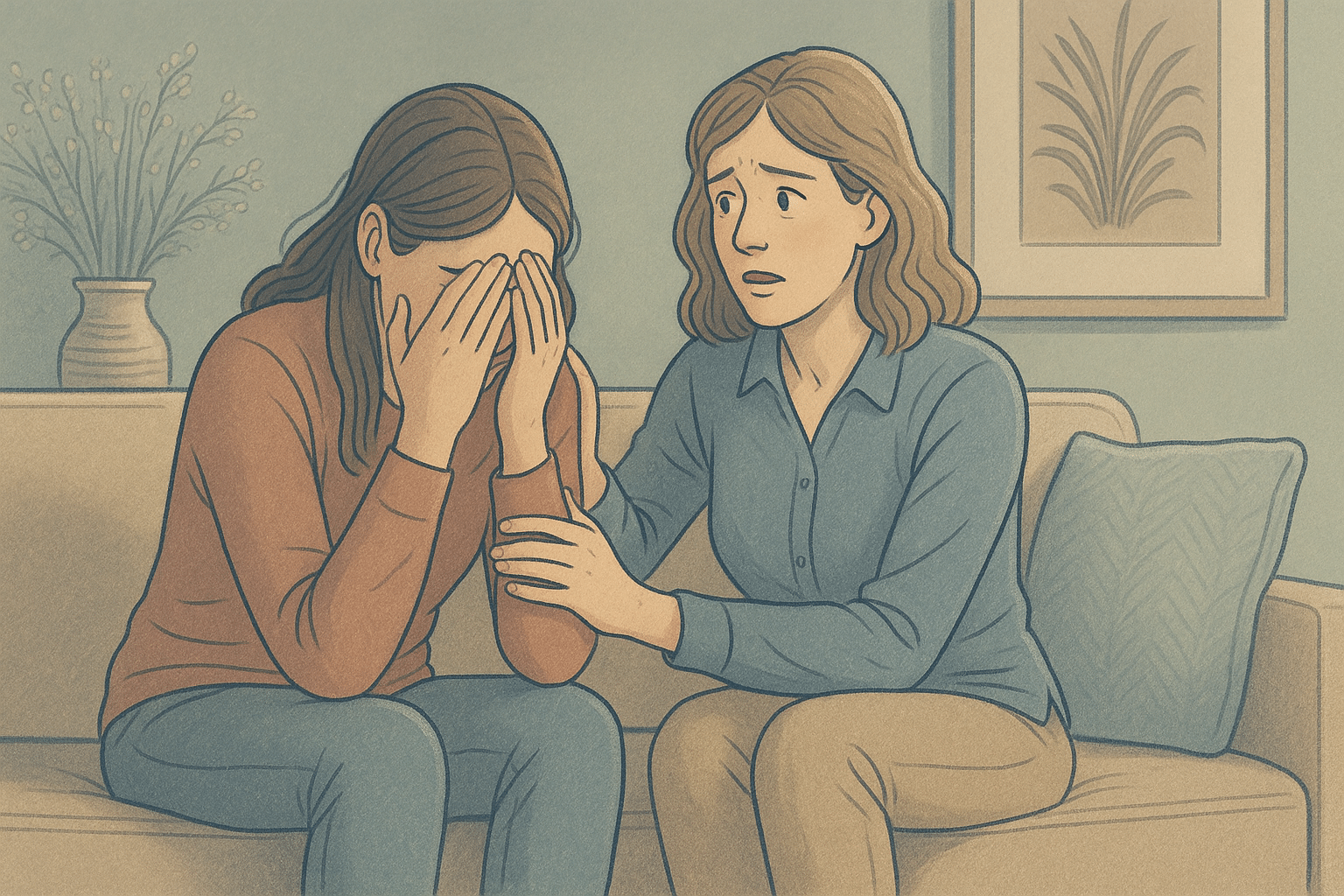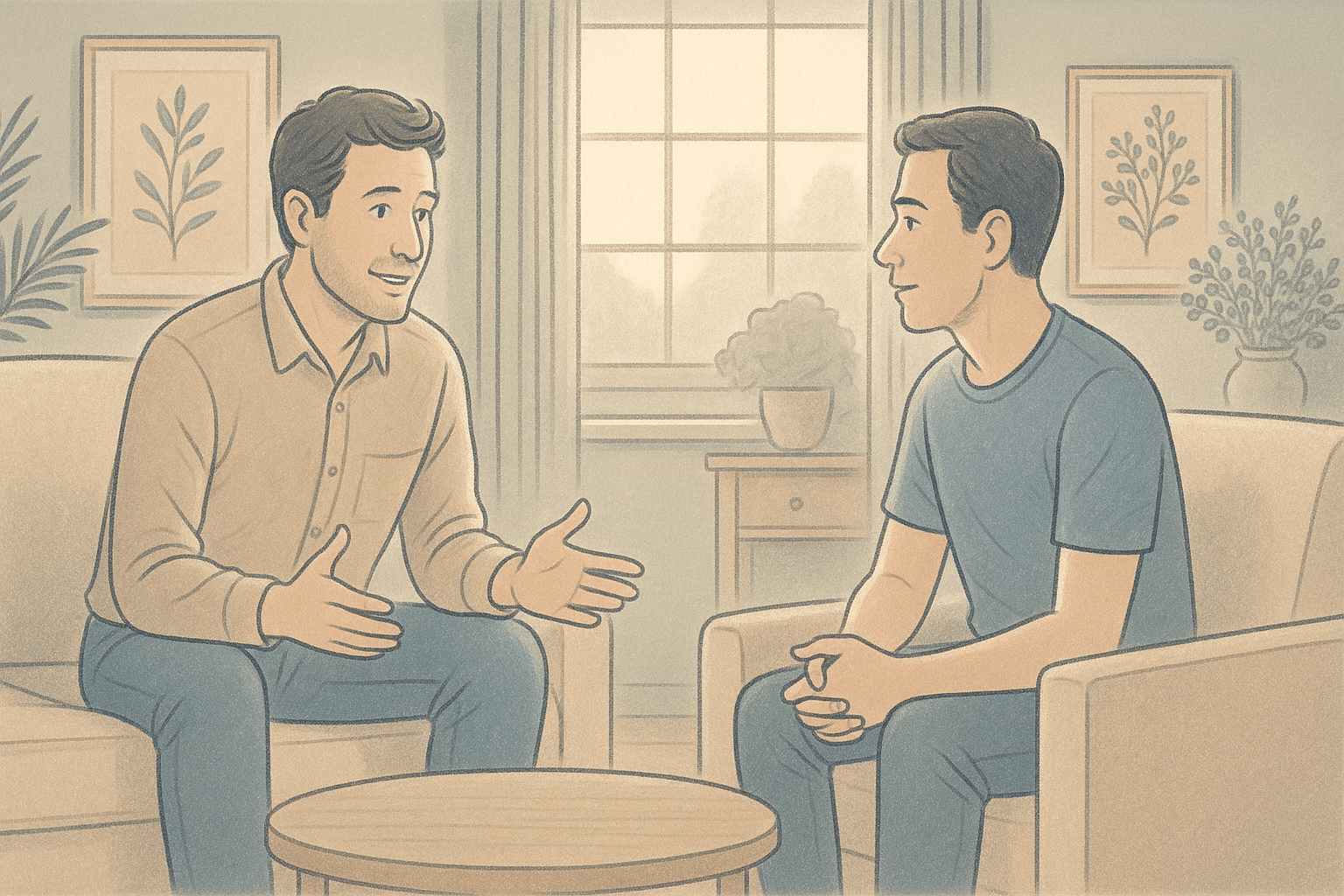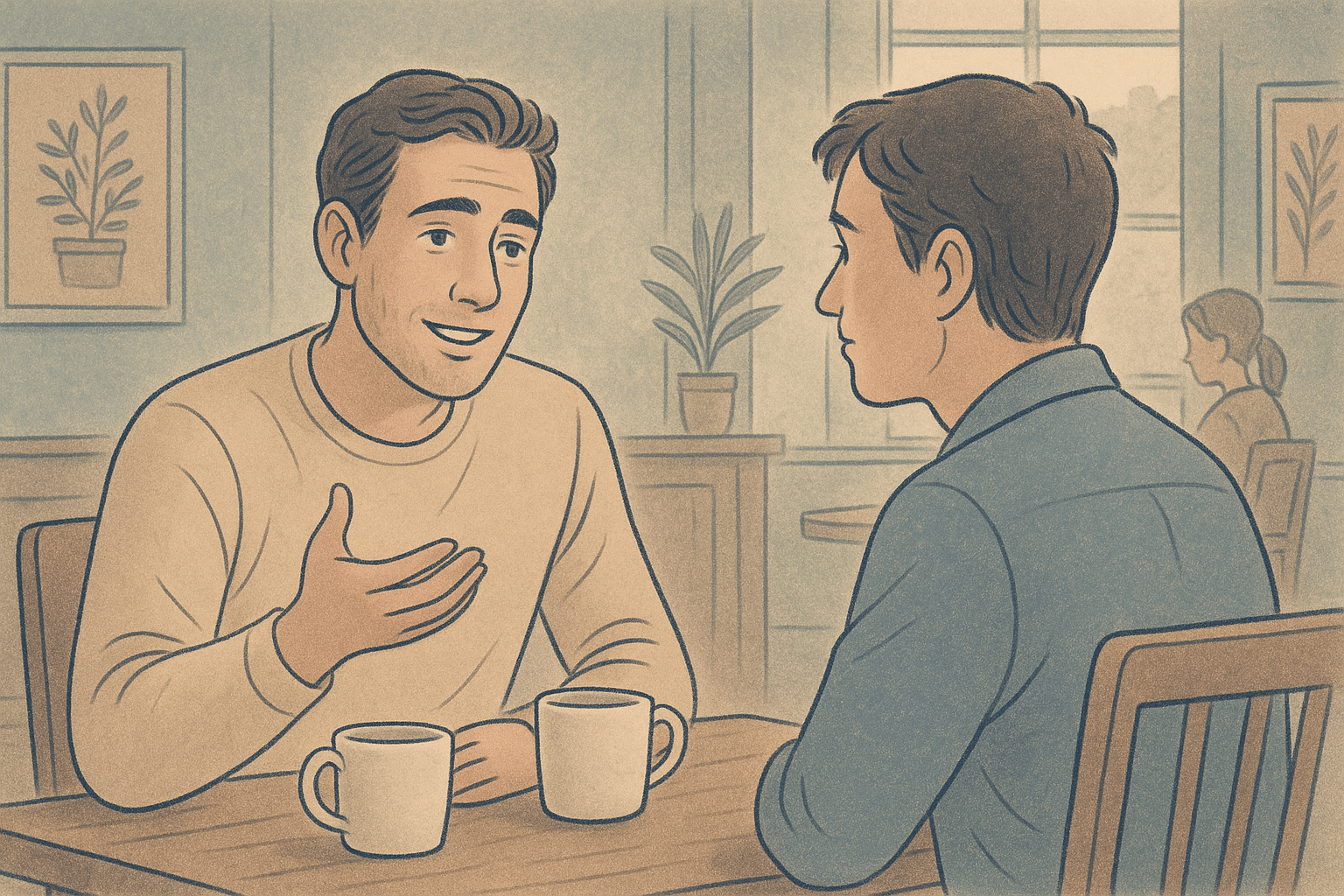Key Takeaways
- Supporting someone with Dissociative Identity Disorder (DID) requires understanding the condition, recognizing different alters, and creating a safe, non-judgmental environment.
- Establishing trust, consistent routines, and clear boundaries helps provide stability for someone navigating the complexities of DID.
- Professional treatment options including trauma-focused therapy and possibly medication can significantly improve quality of life for those with DID.
- A Mission for Michael provides specialized DID treatment and support, offering trauma-informed care through evidence-based therapies like EMDR, DBT and Internal Family Systems, with comprehensive programs designed to address the unique needs of individuals with dissociative disorders.
Understanding DID Basics
Dissociative Identity Disorder is characterized by the presence of multiple distinct identities or personality states that recurrently take control of a person’s behavior. Each identity may have a unique name, personal history, and characteristics that differ from the individual’s primary personality.
The shifts between these identities are often triggered by stress or trauma reminders and can cause significant gaps in memory and awareness.
Recognizing Alters
Alters (alternative personality states) may present in various ways, from subtle shifts in behavior to dramatic changes in voice, posture, vocabulary, and mannerisms.
Learning to recognize these transitions can help you respond appropriately and provide consistent support. Some individuals with DID may have just a few alters, while others might have dozens or even hundreds. Each alter serves a specific protective function within the person’s internal system.
Common Types of Alters
• Protectors: Shield the system from perceived threats
• Child parts: Hold childhood trauma memories
• Caretakers: Manage daily responsibilities
• Persecutors: Internalized critical voices that may cause self-harm
• Hosts: Handle day-to-day life and may be unaware of other alters
Not all switches between alters are obvious. Sometimes the change might be subtle, a shift in posture, different speech patterns, or changed preferences. Becoming familiar with these cues helps you recognize when you’re interacting with different parts of the person’s system.
Trauma Connection
DID is fundamentally a trauma disorder, almost always developing in response to severe, repeated childhood trauma. This trauma typically occurs during critical developmental periods, usually before age 6–9, when a child’s identity is still forming.
When faced with overwhelming abuse or neglect, the child’s mind creates separate states of consciousness to contain traumatic experiences that would otherwise be unbearable. Understanding this trauma foundation is crucial, the fragmentation into alters was originally a creative survival strategy that allowed the person to endure unimaginable circumstances.
| A Mission For Michael: Expert Mental Health Care Founded in 2010, A Mission For Michael (AMFM) offers specialized mental health care across Southern California, Washington, and Virginia. Our accredited facilities provide residential and outpatient programs, utilizing evidence-based therapies such as CBT, DBT, and EMDR. Our dedicated team of licensed professionals ensures every client receives the best care possible, supported by accreditations from The Joint Commission and the California Department of Health Care Services. We are committed to safety and personalized treatment plans. Start your recovery journey with AMFM today! |
How to Help Someone with DID
1. Creating Safety First
Build Trust

Building trust is the foundation of helping someone with DID.
Building trust takes time and requires consistent, predictable behavior on your part. Someone with DID has likely experienced severe betrayal trauma, making it difficult for them to trust others.
When interacting with someone who has DID, follow through on your promises and be transparent about your intentions. Avoid making commitments you can’t keep, as inconsistency can reinforce fears of abandonment or betrayal.
Establish Boundaries
Clear boundaries benefit both you and the person with DID. Healthy boundaries involve communicating your limits respectfully while also respecting theirs.
Discuss what behaviors are acceptable and which ones aren’t, making sure these conversations happen when the person is in a calm, receptive state. For example, you might need to establish that while you’re willing to support them during difficult times, you can’t be available 24/7.
Create Routine
Predictable routines provide essential stability for someone managing DID. Establish regular meal times, sleep schedules, and daily activities whenever possible.
Consider working with your loved one to create visual schedules or use digital calendars that all alters can access. These tools help bridge memory gaps between different parts of the system. Some alters may not be aware of the overall routine, so gentle reminders about daily structure can be helpful without being condescending.
Reduce Triggers
Identifying and managing triggers is crucial for minimizing distress and unnecessary switching. Triggers can include sensory experiences (sounds, smells, textures), situations, words, or interactions that remind the person of past trauma. Work together to identify these triggers and develop strategies to either avoid them or manage reactions when they occur.
2. Communicate Effectively

Effective communication with someone who has DID requires adaptability, patience, and a non-judgmental approach.
Talk to Alters
When interacting with different alters, acknowledge them respectfully by using their preferred names and pronouns. Avoid expressions of surprise, fear, or judgment when switches occur, as these reactions can increase shame and distress.
Each alter serves a purpose within the system, even those that might seem disruptive or difficult. Approach each one with the understanding that they developed to help the person survive trauma.
Stay Calm
Maintaining a calm, steady presence during emotional moments or switching episodes provides essential stability. Your emotional regulation helps the person with DID feel safer and can prevent escalation of distress.
If you find yourself becoming overwhelmed, it’s better to take a short break than to respond with frustration or anger. Explain calmly that you need a moment to collect yourself and will return shortly.
Avoid Judgment
People with DID often face skepticism, dismissal, or pathologizing from others who don’t understand their condition. Create a judgment-free space where all experiences and alters are acknowledged as valid.
Be particularly mindful about avoiding language that suggests the person is “making up” their condition or “acting” as different people. DID is not a choice or performance but a response to overwhelming trauma. Your acceptance helps counter the internalized shame many people with DID carry about their condition.
3. Always be Prepared

The same way medical emergencies happen without warning, DID crises can also happen abruptly. That’s why creating an emergency plan in collaboration with your loved one suffering from DID is important.
Emergency Plan
Creating a comprehensive emergency plan is vital when supporting someone with DID. Work together to develop a written plan that outlines steps to take during various crisis situations, including severe dissociation, suicidal thoughts, or overwhelming flashbacks.
This plan should include emergency contact information, preferred healthcare providers, coping strategies that have worked in the past, and any medications the person is taking.
Contact Professionals
Know when and how to contact mental health professionals during a crisis. Save emergency numbers in your phone, including the person’s therapist, psychiatrist, and local crisis intervention services. Many areas have mobile crisis teams that can respond to mental health emergencies without involving law enforcement.
DID Treatment Options
Trauma-Focused Psychotherapy
This is considered the gold standard treatment for DID. Specialized therapists use approaches like EMDR (Eye Movement Desensitization and Reprocessing), CPT (Cognitive Processing Therapy), or phase-oriented treatment models.
The therapy focuses on processing underlying trauma that led to the development of DID while helping integrate the different parts of the personality system. This long-term approach requires therapists specifically trained in dissociative disorders, as traditional therapy methods may not be effective or could potentially be harmful without proper understanding of the condition.
Internal Family Systems (IFS) Therapy
IFS is specifically designed to work with different “parts” of the personality, making it naturally suited for treating DID. This approach helps individuals develop a healthy relationship with their different alters, promoting internal cooperation rather than conflict.
The therapy emphasizes that all parts have positive intentions and are developed to help the person survive, which aligns well with the non-judgmental approach needed for DID treatment.
Dialectical Behavior Therapy (DBT)
Dialectical Behavior Therapy is particularly helpful for people with DID because it teaches crucial skills for emotional regulation, distress tolerance, and interpersonal effectiveness.
Many individuals with DID struggle with intense emotions and self-harm behaviors, making DBT’s focus on coping strategies especially valuable.
Comprehensive DID Support at AMFM
At AMFM, we understand that supporting someone with DID affects the entire family system, which is why we provide comprehensive care that addresses both the individual’s needs and their support network.
Our specialized treatment programs utilize evidence-based therapies specifically effective for dissociative disorders, including EMDR, Internal Family Systems, and DBT. These approaches address the underlying trauma while helping individuals develop healthier coping mechanisms and internal cooperation between different parts of their personality.

We recognize that each person’s journey with DID is unique, and our treatment plans are individualized to meet specific needs and goals.
Beyond individual therapy, we provide family education and support services to help loved ones understand how to best support recovery while maintaining their own well-being. Our experienced clinical teams across California, Virginia, and Washington are trained in the complexities of dissociative disorders and can guide both individuals and families through the recovery process.
Don’t navigate this challenging journey alone – contact us to learn how our specialized DID treatment programs can provide the comprehensive support you and your loved one need.
Frequently Asked Questions
How do I respond to different alters?
Respond to each alter with respect and consistency, acknowledging their unique identity while maintaining appropriate boundaries. Use the name and pronouns each alter prefers, and try to remember their individual preferences and triggers. Your consistent respect for all parts of the system helps promote internal cooperation and healing.
Is DID the same as schizophrenia?
No, DID and schizophrenia are distinct disorders with different causes, symptoms, and treatments. The key difference is that schizophrenia is a psychotic disorder characterized by a disconnect from reality, including hallucinations (false sensory perceptions) and delusions (false beliefs). DID, on the other hand, is a dissociative disorder characterized by fragmented identity states resulting from trauma.
Should I tell others about someone’s DID?
Disclosure of someone’s DID diagnosis should always remain their choice, not yours. This condition is deeply personal and often surrounded by misunderstanding and stigma. If your loved one chooses to keep their diagnosis private, respect this decision completely.
What causes switching between alters?
Switching between alters is typically triggered by internal or external stressors that activate trauma responses. Common triggers include situations that resemble past trauma, overwhelming emotions, conflict in relationships, stress at work or school, or physical illness. Specific sensory experiences like certain sounds, smells, or physical sensations can also trigger switches.
What specialized treatment does AMFM offer for individuals with DID?
At AMFM, we provide comprehensive trauma-informed care specifically designed for complex dissociative disorders like DID. Our evidence-based treatment approaches include EMDR, Internal Family Systems therapy, and DBT, all of which are particularly effective for trauma-based dissociative conditions.
We offer multiple levels of care including inpatient residential treatment, intensive outpatient programs, and traditional outpatient services across our California, Virginia, and Washington locations.








